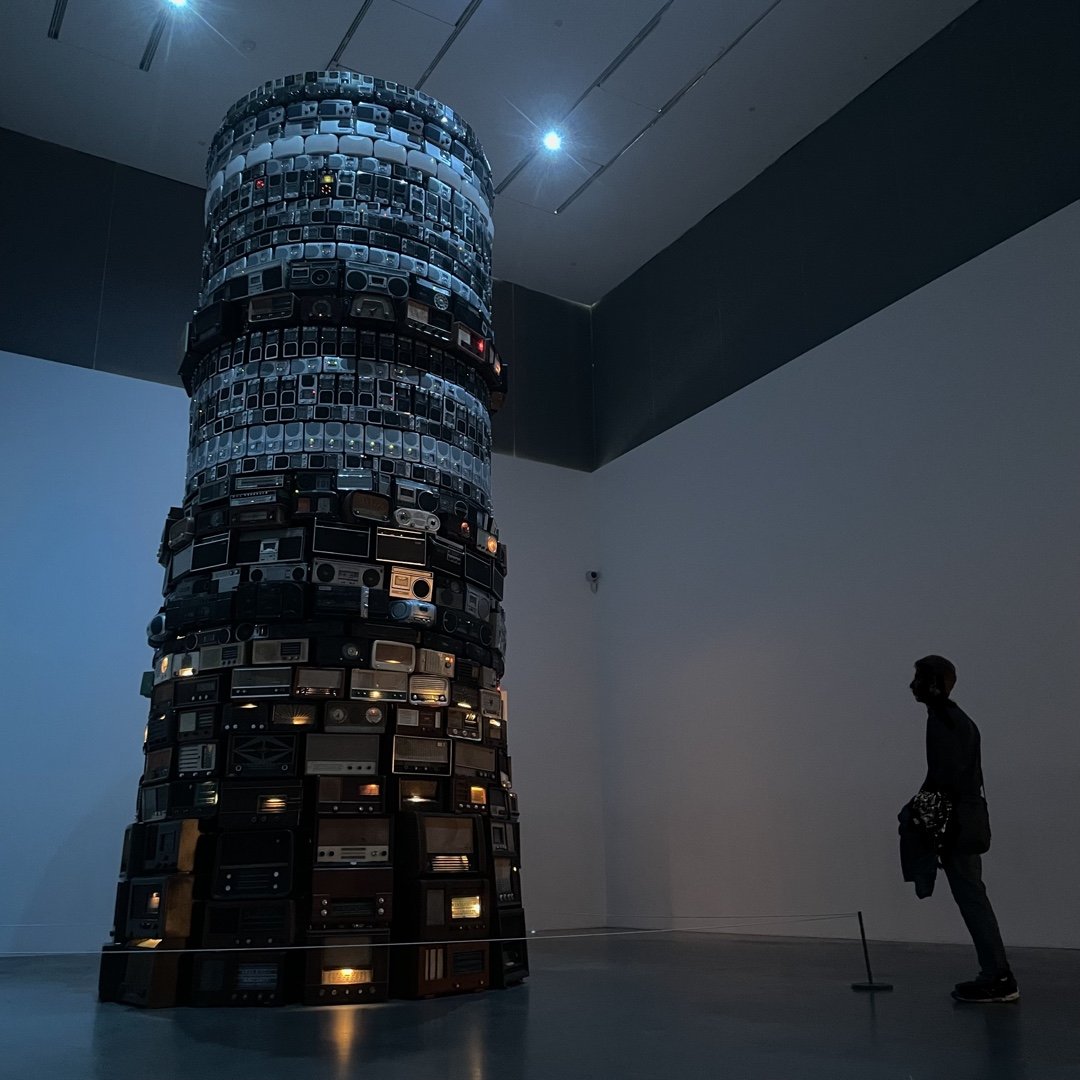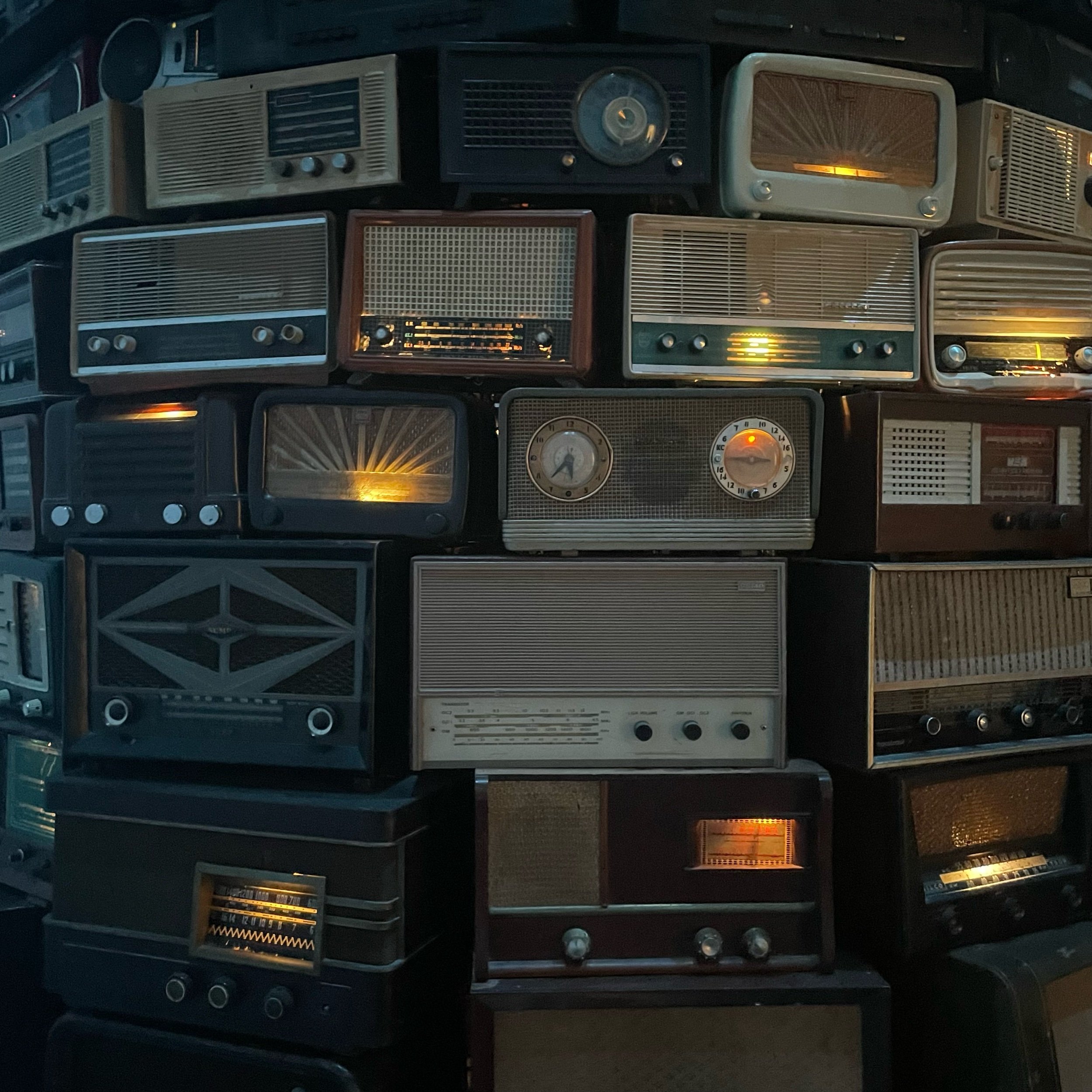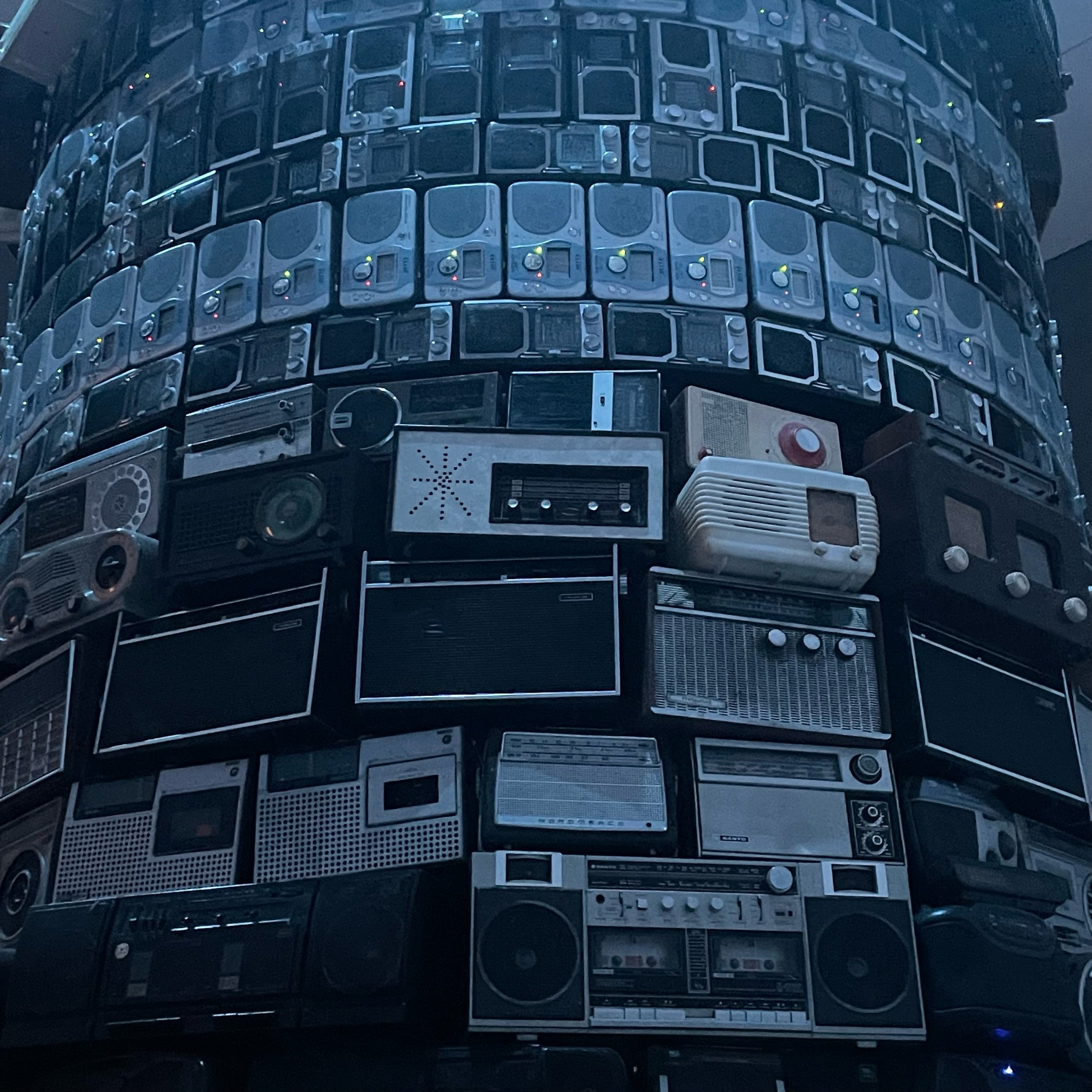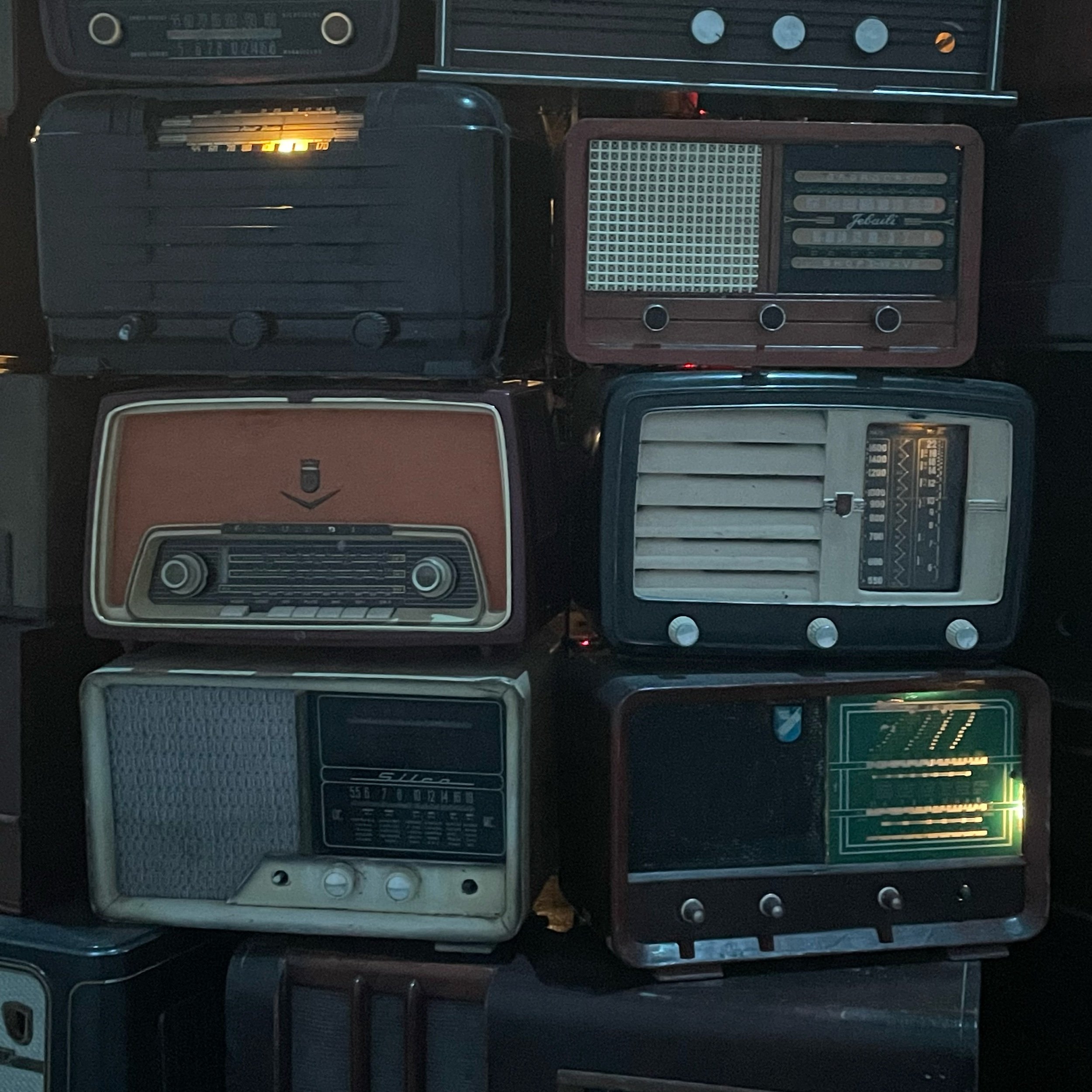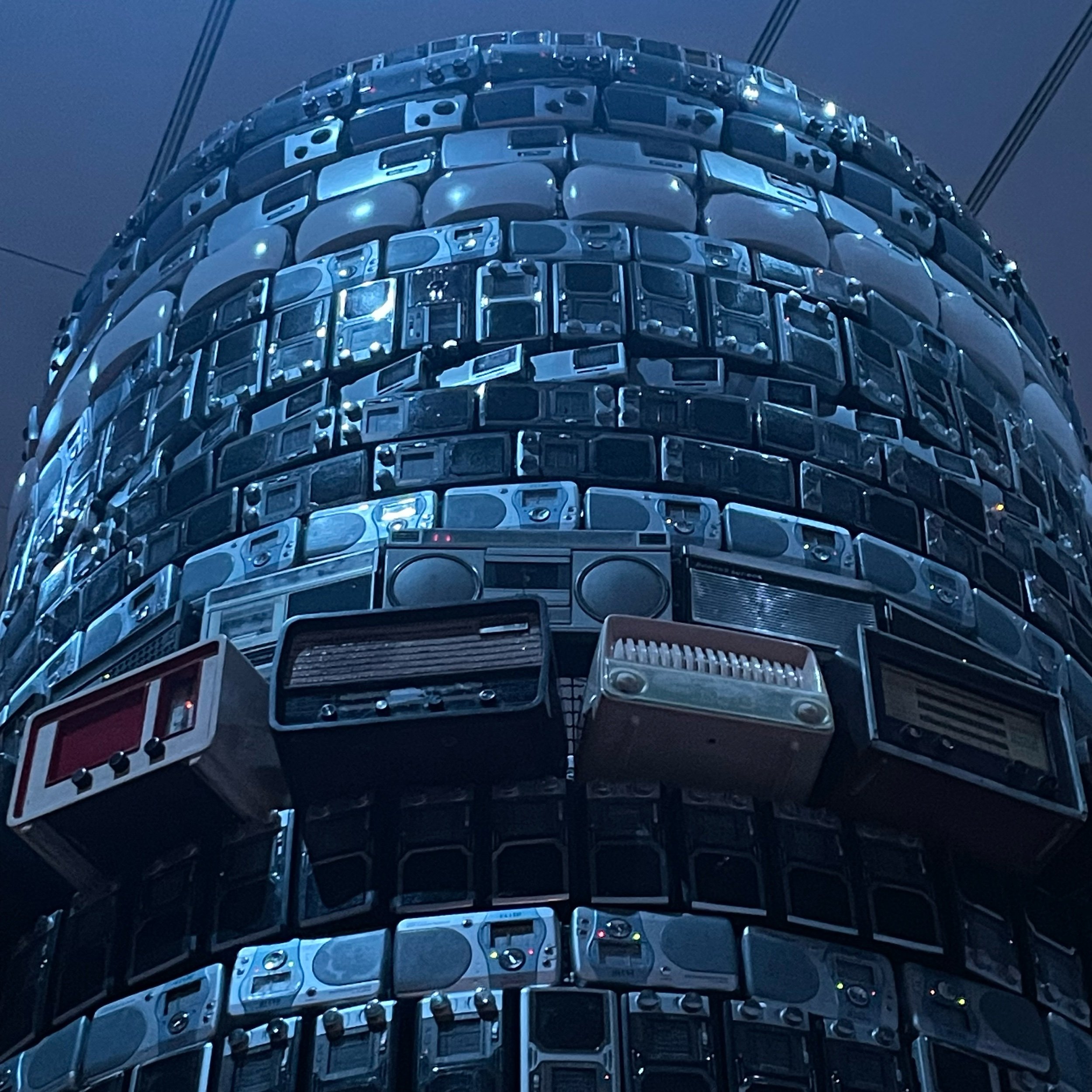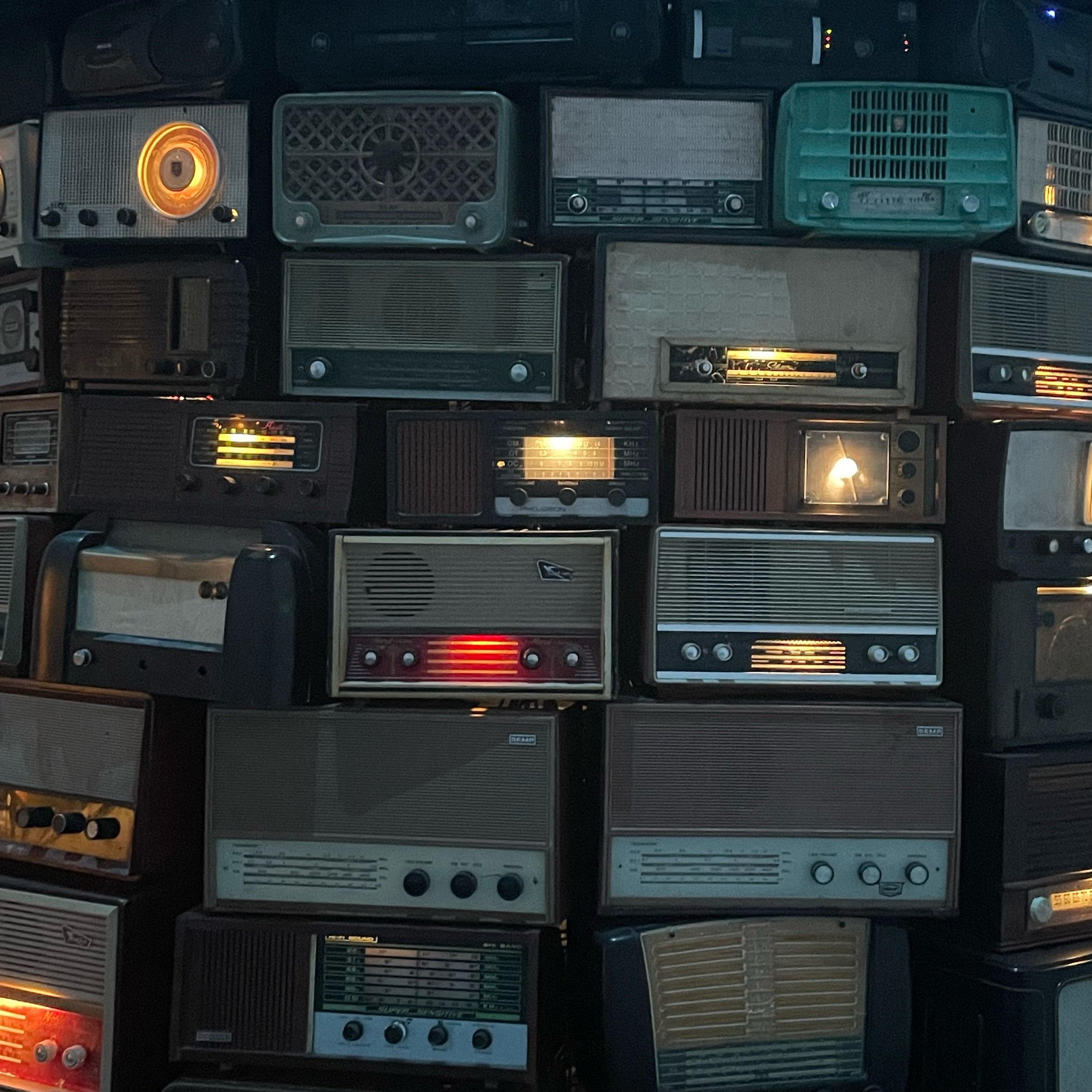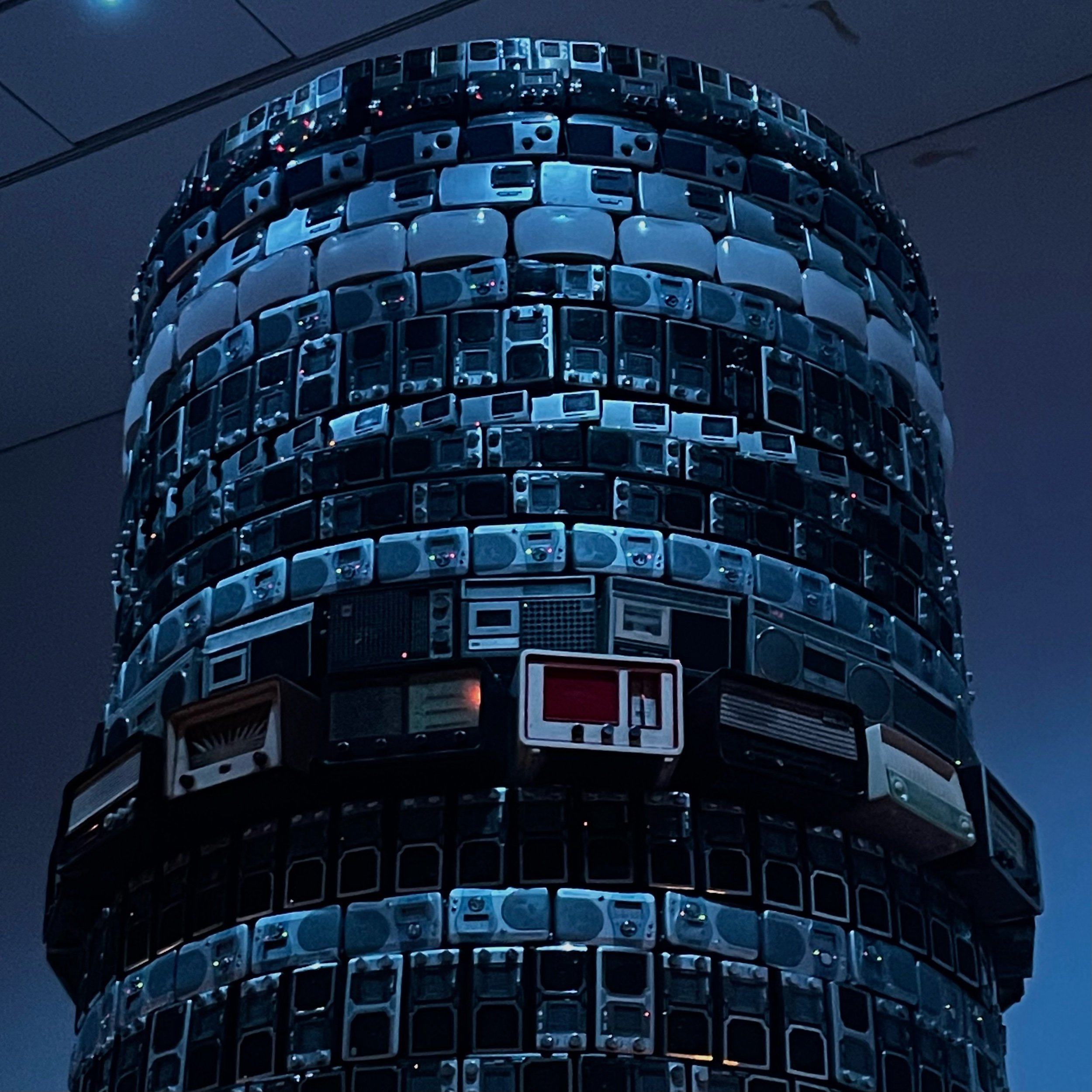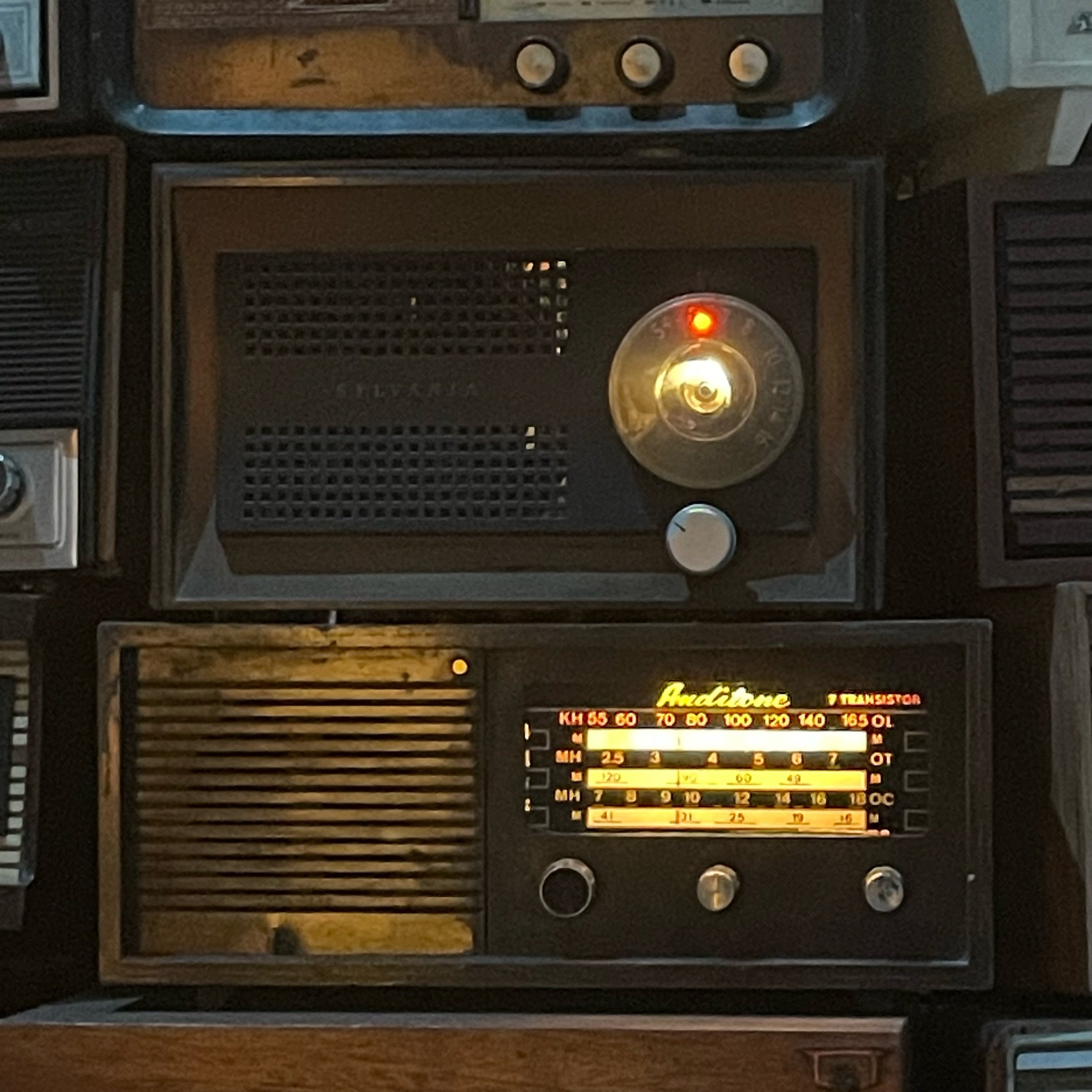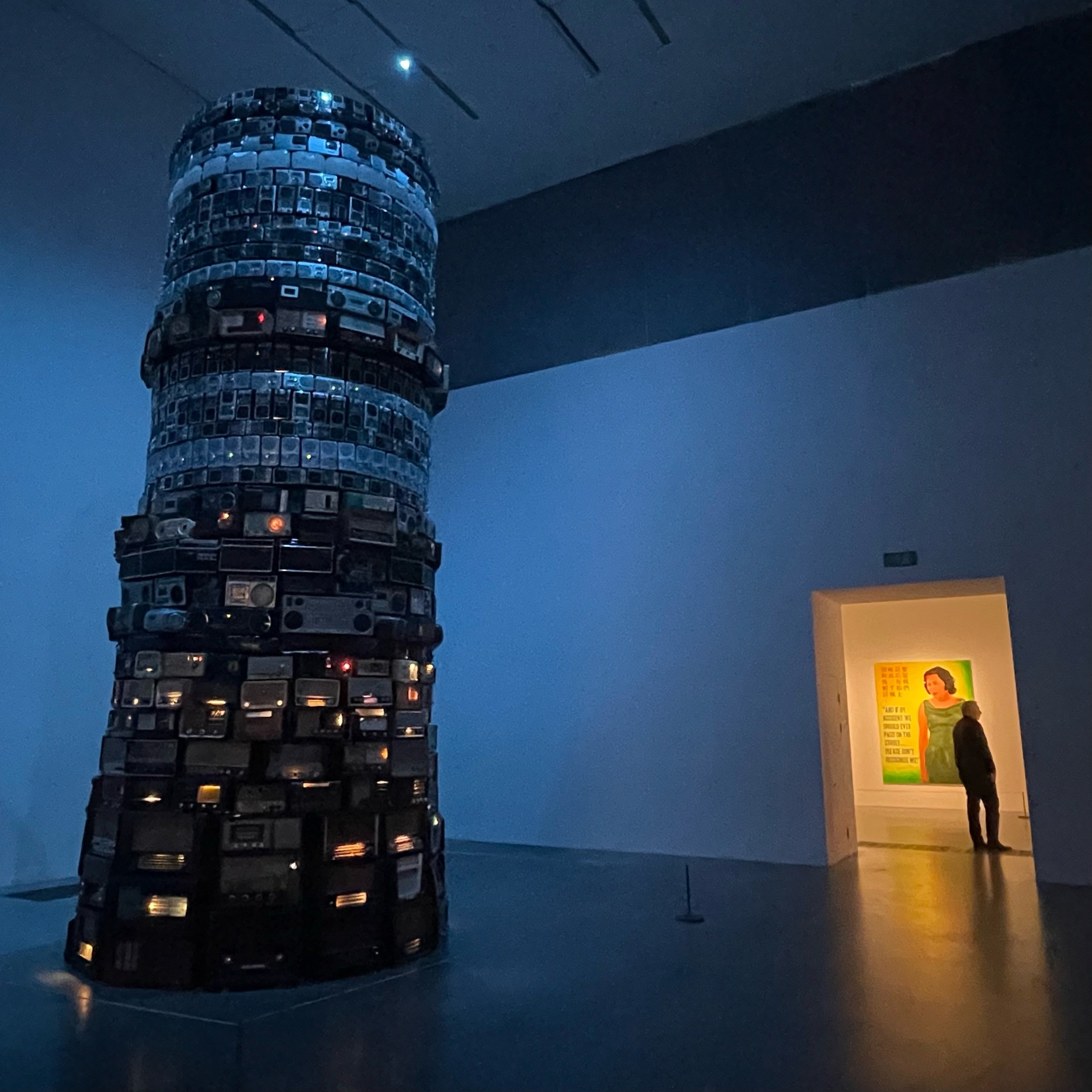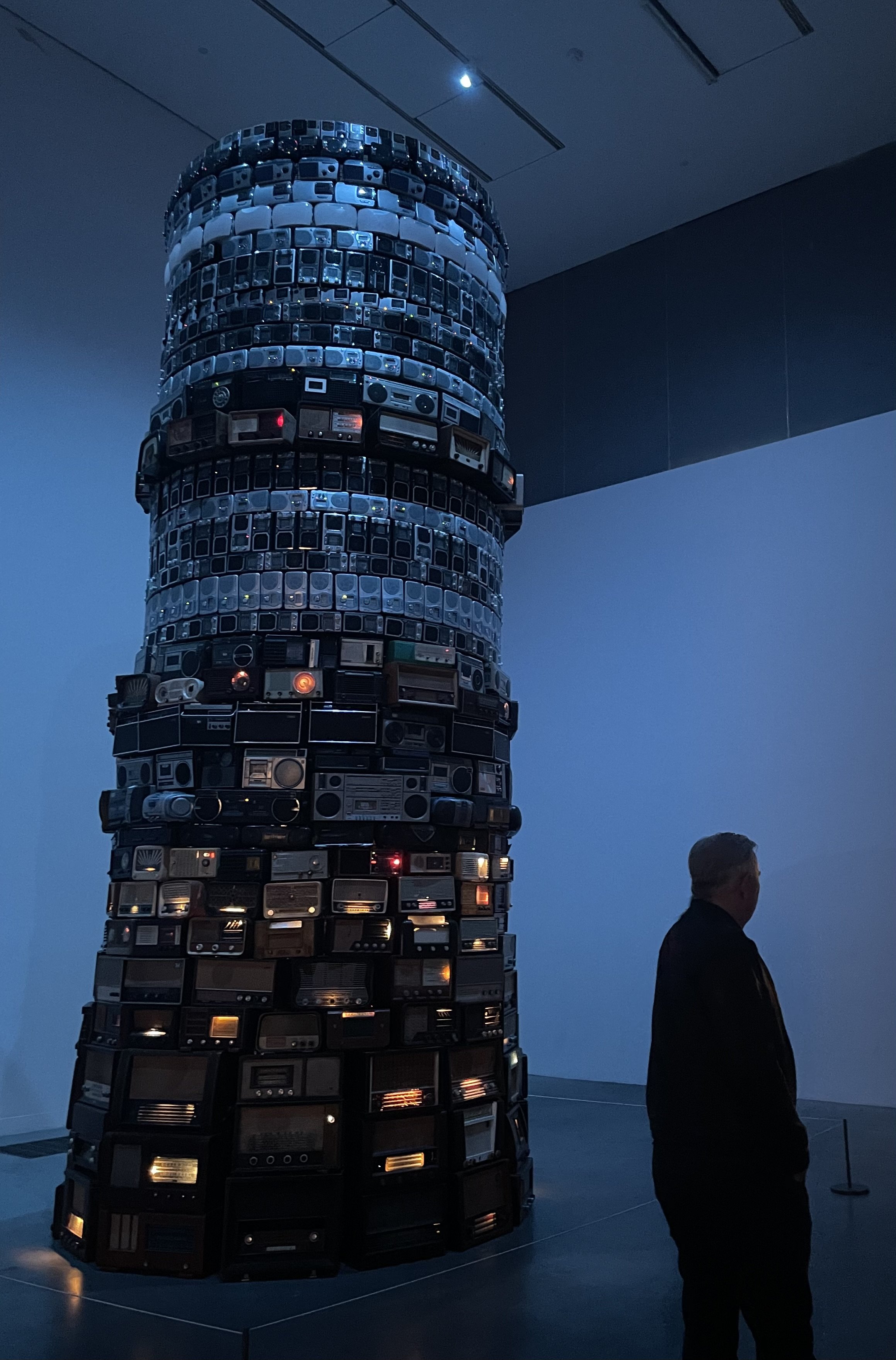Babel (2001)
Cildo Meireles (b.1948)
Babel, 2001
radios, metal, lighting and sound
Overall display dimensions variable
Tate Modern
I recently spent forty-five minutes sitting quietly in the corner of a darkened room of the Tate Modern. I was listening carefully, because I was curious about what my ears would pick out from the hundreds of radios stacked ten metres tall in a circular towering structure.
“I believe the children are our future
Teach them well and let them lead the way”
The first thing I can understand is Whitney Houston’s unmistakable voice. Her Grammy-winning vocal chords are crystal clear amongst the static, other music and news talk radio that’s all playing at once, resulting in a weird form of white noise not unlike the crashing of ocean waves. It’s practically impossible to make out anything, until Whitney hits those high notes and rises above it all. Didn’t she always?
It’s a fitting introduction to Babel, a 2001 installation by Brazilian artist Cildo Meireles that requires no knowledge whatsoever of the Biblical story on which it is based, because it so fully modernises the parable in a non-denominational way. If you don’t know it, the original claimed the human race was once united, speaking only one language. Until they decided to build a tower to God, who rewarded their hubris with dozens of tongues, resulting in an inability to communicate that scattered them around the world.
As I sit and listen, countless people walk through the room. Some stop immediately at the entrance to gaze up at the spectacle. Others walk right by. One woman strides purposely across the room before pausing momentary, then turns back to go read the wall text. Smartphones are frequently pulled out, which requires the owners to step back in order to get the full tower in frame. People walk in, step back, pause and walk forward again. An inadvertent dance in a room full of radios where no one comes to dance.
Whitney has finished singing and now all I can hear is a blend of announcers all talking at the same time. It sounds like the pub on a Friday after work. Laughter occasionally punctures the noise. A man’s voice briefly rises above the rest before disappearing back into the static. I wonder which radios are actually on, and how many of them are tuned to the same station?
“Alright stop, collaborate and listen
Ice is back with my brand new invention
Something grabs a hold of me tightly
Flow like a harpoon daily and nightly
Will it ever stop? Yo, I don't know
Turn off the lights, and I'll glow”
If I strain so hard my neck gets taut I can just about hear the lyrics to Ice Ice Baby, but it’s not Vanilla Ice’s daft lyrics that I initially picked out. It was John Deacon‘s unmistakeable bass line from the Queen & David Bowie song ‘Under Pressure’ that he sampled. I wonder if the late 80’s hits are coming from the ring of street-savvy boomboxes that starts about eight feet from the floor. They sit atop a base made of large, chunky wooden cabinet consoles. Old antique types with dials that light up with a golden yellow glow. They give off such a warm feeling. I want to curl up next to them with a blanket and a cat.
It’s unsurprising that it’s music I’m most able to make out, but somewhat ironic that the music playing today is from my youth. This work has always brought back memories of my childhood, slowly tuning through my Sony Dream Machine, hoping to hear my favourite band before I’d drifted asleep. Now I spot Def Leppard playing. I think it’s Hysteria, but possibly a newer recording? Before I can figure it out, it’s gone, having receded back into the noise.
After having sat for so long, I decide to get up and wander round the work. Both your proximity to and location around it changes what you hear and what comes into focus. The physical ability to lean in towards something familiar is a freedom, although the rest of the cacophony still makes it a challenge to clearly make out anything. I’m surprised that during my time in the room I only saw a few people circumnavigate the structure. I guess the rest just figured “Yeah, I get it. It’s a stack of radios.” and move on.
Apparently, it took Meireles eleven years to turn his concept into a reality. I haven’t been able to find out why, but he eventually settled on the final form, stating “radios are interesting because they are physically similar and at the same time each radio is unique.” I love visiting this work, because I never know what I might hear. Various snippets from around the world remind me how much I still have to experience, but it’s always the melodic tunes that make me pause, lean in and listen just that little bit longer.
That’s why I like it.
Music is the one true universal language.
Bonus:
Click the PLAY > arrow to listen to a recording I made when I sat in the room.
Additional reading:
Previously, on Why I Like It:
May — Human Frailty (c1656), Salvator Rosa
Apr — Stacked Sill (2022), Harriet Mena Hill
Mar — Black Square (2003), Gillian Carnegie

